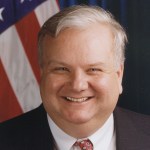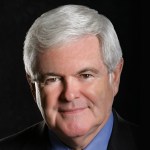Federal Reserve Chairman Jay Powell, is constantly saying that monetary policy is being restrictive. The question I would ask is what’s being restricted. He himself in his press conference, pointed out that rather than look at GDP, to look at demand, you really want to look at final demand by domestic purchasers. It’s a technical term. But it says how much money are people spending in the US, and that might include businesses? Well, in the first quarter of this year, real final demand by domestic purchases went up 3.1%. That was up from the 2.8% in the previous four quarters, nominal, which includes inflation was up 5.9 versus 5.3, in the previous four quarters. Now, two little problems for the Fed in the math in that first, both nominal and real final demand, have been accelerating. They’re growing faster in the first quarter, which was supposedly weak, then they had bad things are being restricted, that’s not going to happen. And second of all, the inflation applauded implied by those numbers 2.8% In the first quarter versus 2.5, and on previous four, suggested inflation is accelerating. That’s exactly the opposite of what the Fed wants. So neither real growth nor inflation, are now being restricted by a supposedly restrictive monetary policy. Well, why is that? And I think that perhaps the Chairman has forgotten the most important channel by which fed policy affects the economy. And that’s through household wealth. Well, that sounds a little bit odd. But think about how a typical family would behave. They know about how much money they’re going to need when they retire. They probably add in expenses, like paying for the kids education, or maybe their wedding. And as long as they have enough leftover, to make it through what we call life cycle reasons, then they’re comfortable. If they have not enough money to do those essential lifecycle purchases, then the only way to get there is to start saving now. And if they save now, that means they can’t consume now, they don’t consume now the economy is weak. But in fact, savings rates are now at record lows. And that’s one of the reasons why final demand is just so great. consumers feel flush, because they feel wealthy. Well, if you feel wealthy, then there’s you have met your life cycle needs. You can go out and spend go out to dinner if you want take that vacation. Well, what do we mean by them feeling wealthy? Well, the history of the last 25 years has been that if a series of bubbles, one of them was the so called.com bubble at the turn of the century, which ended up crashing. And what happened there? Well, since the peak of the.com bubble, basically a stock market bubble, stocks have risen four times as fast from that bubble peak, as has inflation. So certainly stock prices haven’t been restrained at all. They’re up by four times faster than inflation from the peak of their last bubble, or home prices, which had a peak in 2007, just before they crashed and caused the great financial crisis. Average house prices since then, since 2007, have risen 50% faster than the overall inflation rate. Again, this is from the peak of their bubble. So it’s not that we’re simply at a bubble. We’re in a bubble of all bubbles with stock prices and housing prices through the roof relative to where they were when everyone thought those prices were in a bubble. Yen remember 200% more in terms of stocks and 50% more than inflation, in terms of housing. That’s a lot of extra money to spend and they’re spending it. So I think what Chairman Powell and The rest of the FOMC are forgetting is that the wealth effect is really going to be their enemy, if they expect their inflation rate to drop to 2%. It’s strange when they started quantitative easing back in 2009. That was Ben Bernanke. He was explicit on what they were trying to do. They were trying to create a wealth effect. With that wealth effect. They were hoping that consumers because they would feel wealthy would spend more, and they succeeded. The problem today is that they succeeded beyond their wildest expectations.
















Larry Lindsey
President & CEO, The Lindsey Group
Commentary
Our commentary partners will help you reach your own conclusions on complex topics.
Is the US looking for a war?
8 hrs ago
Peter Zeihan
How future generations could shift US support for Israel
Yesterday
Peter Zeihan
Why election of European Commission president is so important
Wednesday
Peter Zeihan
‘Both completely corrupt’: What Americans think of Biden, Trump
Tuesday
Dr. Frank Luntz
Federal Reserve surpassed its own wildest expectations
Larry Lindsey
President & CEO, The Lindsey Group
By Straight Arrow News
On May 14, the U.S. Bureau of Labor Statistics released the most current producer price index (PPI) report, which showed an increase of 0.5% month-over-month in April. After the report’s release, U.S. Federal Reserve chairman Jerome “Jay” Powell said that while he believes the current policy rate is restrictive by many measures, the Fed needs more time to evaluate whether it is sufficiently restrictive.
Watch the above video as Straight Arrow News contributor Larry Lindsey argues that current monetary policy actually isn’t restrictive at all and contends that we’re in a financial “bubble of all bubbles.”
Be the first to know when Larry Lindsey publishes a new opinion every Monday! Download the Straight Arrow News app and enable push notifications today!
The following is an excerpt of the above video:
Federal Reserve Chairman Jay Powell is constantly saying that monetary policy is being restrictive. The question I would ask is, “What’s being restricted?” He, himself, in his press conference, pointed out that rather than look at GDP, to look at demand you really want to look at final demand by domestic purchasers. It’s a technical term, but it says how much money are people spending in the U.S. and that might include businesses.
Well, in the first quarter of this year, real final demand by domestic purchases went up 3.1%. That was up from the 2.8% in the previous four quarters. Nominal, which includes inflation, was up 5.9 versus 5.3 in the previous four quarters.
Now, two little problems for the Fed in the math in that. First, both nominal and real final demand have been accelerating. They’re growing faster in the first quarter, which was supposedly weak, than they have been. If things are being restricted, that’s not going to happen.
And second of all, the inflation implied by those numbers — 2.8% In the first quarter, versus 2.5 [sic] on [the] previous four — suggests inflation is accelerating. That’s exactly the opposite of what the Fed wants.
Federal Reserve Chairman Jay Powell, is constantly saying that monetary policy is being restrictive. The question I would ask is what’s being restricted. He himself in his press conference, pointed out that rather than look at GDP, to look at demand, you really want to look at final demand by domestic purchasers. It’s a technical term. But it says how much money are people spending in the US, and that might include businesses? Well, in the first quarter of this year, real final demand by domestic purchases went up 3.1%. That was up from the 2.8% in the previous four quarters, nominal, which includes inflation was up 5.9 versus 5.3, in the previous four quarters. Now, two little problems for the Fed in the math in that first, both nominal and real final demand, have been accelerating. They’re growing faster in the first quarter, which was supposedly weak, then they had bad things are being restricted, that’s not going to happen. And second of all, the inflation applauded implied by those numbers 2.8% In the first quarter versus 2.5, and on previous four, suggested inflation is accelerating. That’s exactly the opposite of what the Fed wants. So neither real growth nor inflation, are now being restricted by a supposedly restrictive monetary policy. Well, why is that? And I think that perhaps the Chairman has forgotten the most important channel by which fed policy affects the economy. And that’s through household wealth. Well, that sounds a little bit odd. But think about how a typical family would behave. They know about how much money they’re going to need when they retire. They probably add in expenses, like paying for the kids education, or maybe their wedding. And as long as they have enough leftover, to make it through what we call life cycle reasons, then they’re comfortable. If they have not enough money to do those essential lifecycle purchases, then the only way to get there is to start saving now. And if they save now, that means they can’t consume now, they don’t consume now the economy is weak. But in fact, savings rates are now at record lows. And that’s one of the reasons why final demand is just so great. consumers feel flush, because they feel wealthy. Well, if you feel wealthy, then there’s you have met your life cycle needs. You can go out and spend go out to dinner if you want take that vacation. Well, what do we mean by them feeling wealthy? Well, the history of the last 25 years has been that if a series of bubbles, one of them was the so called.com bubble at the turn of the century, which ended up crashing. And what happened there? Well, since the peak of the.com bubble, basically a stock market bubble, stocks have risen four times as fast from that bubble peak, as has inflation. So certainly stock prices haven’t been restrained at all. They’re up by four times faster than inflation from the peak of their last bubble, or home prices, which had a peak in 2007, just before they crashed and caused the great financial crisis. Average house prices since then, since 2007, have risen 50% faster than the overall inflation rate. Again, this is from the peak of their bubble. So it’s not that we’re simply at a bubble. We’re in a bubble of all bubbles with stock prices and housing prices through the roof relative to where they were when everyone thought those prices were in a bubble. Yen remember 200% more in terms of stocks and 50% more than inflation, in terms of housing. That’s a lot of extra money to spend and they’re spending it. So I think what Chairman Powell and The rest of the FOMC are forgetting is that the wealth effect is really going to be their enemy, if they expect their inflation rate to drop to 2%. It’s strange when they started quantitative easing back in 2009. That was Ben Bernanke. He was explicit on what they were trying to do. They were trying to create a wealth effect. With that wealth effect. They were hoping that consumers because they would feel wealthy would spend more, and they succeeded. The problem today is that they succeeded beyond their wildest expectations.
Election 2024 will boil down to the Great Lakes states
Pollsters and pundits have been engaged in a long debate about how Biden or Trump might win the 2024 election, with much of their focus spent on the “swing state” electoral battlegrounds. While the winners of Alabama or California may be obvious, for instance, who wins Pennsylvania is a more difficult question. Watch the above…
Jun 10
Why the Fed should consider Theory of Reflexivity when fixing policy
The Theory of Reflexivity, often used in the context of economics and financial markets, implies that investors don’t base their decisions on reality but on their perceptions of reality. This creates a feedback loop where investors’ perceptions influence economic fundamentals, which in turn alter investor perceptions. Watch the above video as Straight Arrow News contributor…
Jun 3
Polls give slight advantage to Trump in Electoral College
With the U.S. general election only six months away, leading candidates President Joe Biden and former President Donald Trump appear to be engaged in a very close contest. In their 2020 race, the winner of the Electoral College was ultimately determined by a relative handful of voters in just a few swing states, even though…
May 13
College sports is big money but not everyone benefits
March Madness has wrapped up and Caitlin Clark has emerged as a household name as well as a wealthy student athlete. Earning over $3 million throughout her college career, her success stands in stark contrast to the previous notion that collegiate athletes shouldn’t earn anything beyond their scholarship. Straight Arrow News contributor Larry Lindsey examines…
Apr 29
Underreported stories from each side
Group accuses Pa. teachers union of illegally using money to back Shapiro’s 2022 campaign
8 sources | 0% from the left
Getty Images
Some House Republicans slam Vance as Trump’s VP pick: ‘The worst choice’
8 sources | 0% from the right
Reuters
Latest Stories
Congress still trying to figure out how to reduce wasteful military spending
Watch 2:29
3 hrs ago
US Navy, Air Force making waves with new weapons at RIMPAC
Watch 6:03
3 hrs ago
Israeli PM Netanyahu meets with Trump at Mar-a-Lago
Watch 2:54
3 hrs ago
Growing US nuclear power resurgence reaches the nation’s heartland
Watch 1:19
3 hrs ago
Beer from the sun, other solar thermal projects get government funding
Watch 2:04
4 hrs ago
Popular Opinions
In addition to the facts, we believe it’s vital to hear perspectives from all sides of the political spectrum.
Trump has an excellent opportunity with Black voters
9 hrs ago
Star Parker
Don’t fall for GOP’s cheap racist attacks on Kamala Harris
10 hrs ago
Dr. Rashad Richey
Americans must reject Trump to defend our democracy
Yesterday
Jordan Reid
Why all the changes in European parliamentary governments?
Wednesday
Newt Gingrich